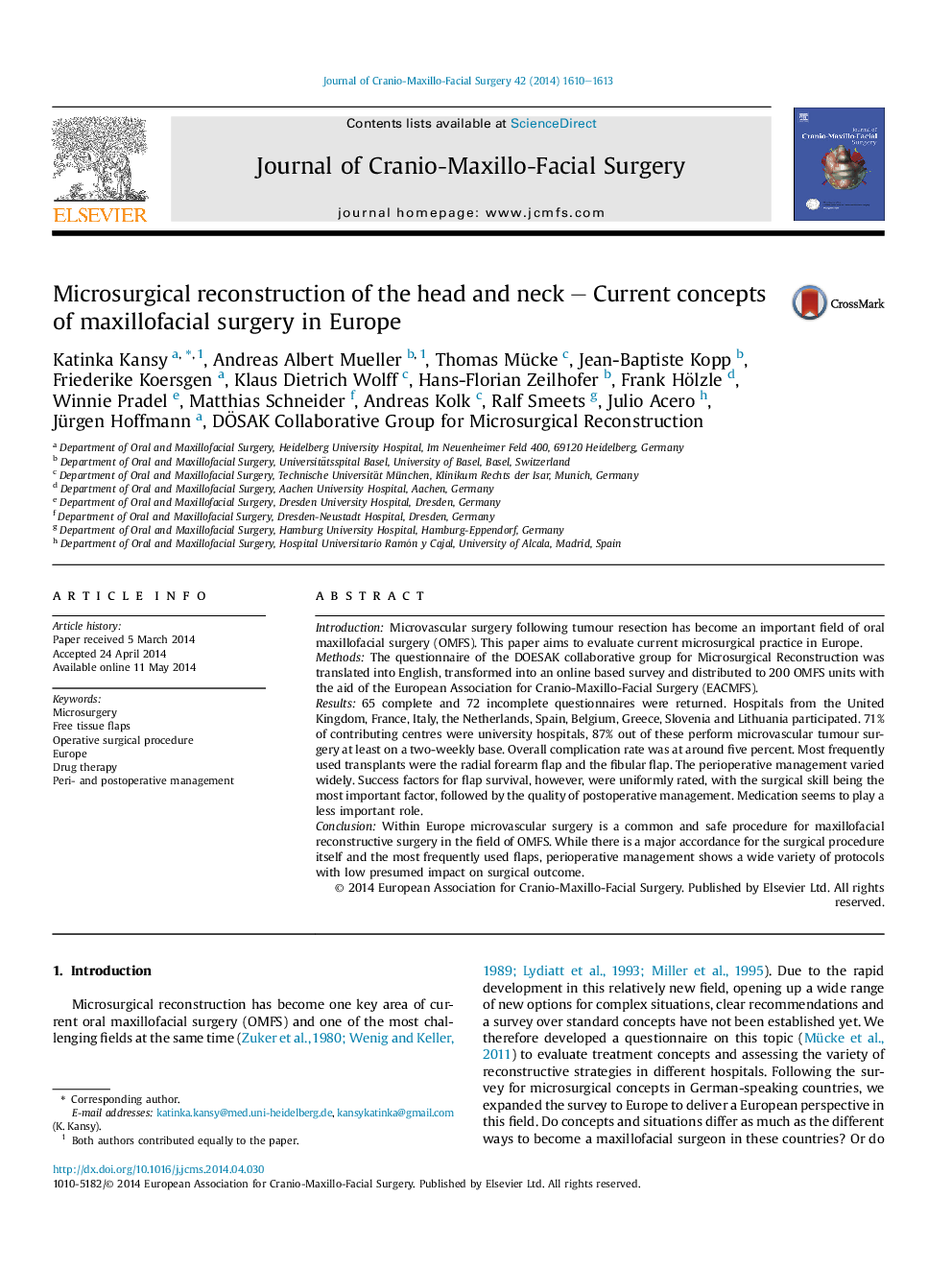| Article ID | Journal | Published Year | Pages | File Type |
|---|---|---|---|---|
| 3142714 | Journal of Cranio-Maxillofacial Surgery | 2014 | 4 Pages |
IntroductionMicrovascular surgery following tumour resection has become an important field of oral maxillofacial surgery (OMFS). This paper aims to evaluate current microsurgical practice in Europe.MethodsThe questionnaire of the DOESAK collaborative group for Microsurgical Reconstruction was translated into English, transformed into an online based survey and distributed to 200 OMFS units with the aid of the European Association for Cranio-Maxillo-Facial Surgery (EACMFS).Results65 complete and 72 incomplete questionnaires were returned. Hospitals from the United Kingdom, France, Italy, the Netherlands, Spain, Belgium, Greece, Slovenia and Lithuania participated. 71% of contributing centres were university hospitals, 87% out of these perform microvascular tumour surgery at least on a two-weekly base. Overall complication rate was at around five percent. Most frequently used transplants were the radial forearm flap and the fibular flap. The perioperative management varied widely. Success factors for flap survival, however, were uniformly rated, with the surgical skill being the most important factor, followed by the quality of postoperative management. Medication seems to play a less important role.ConclusionWithin Europe microvascular surgery is a common and safe procedure for maxillofacial reconstructive surgery in the field of OMFS. While there is a major accordance for the surgical procedure itself and the most frequently used flaps, perioperative management shows a wide variety of protocols with low presumed impact on surgical outcome.
